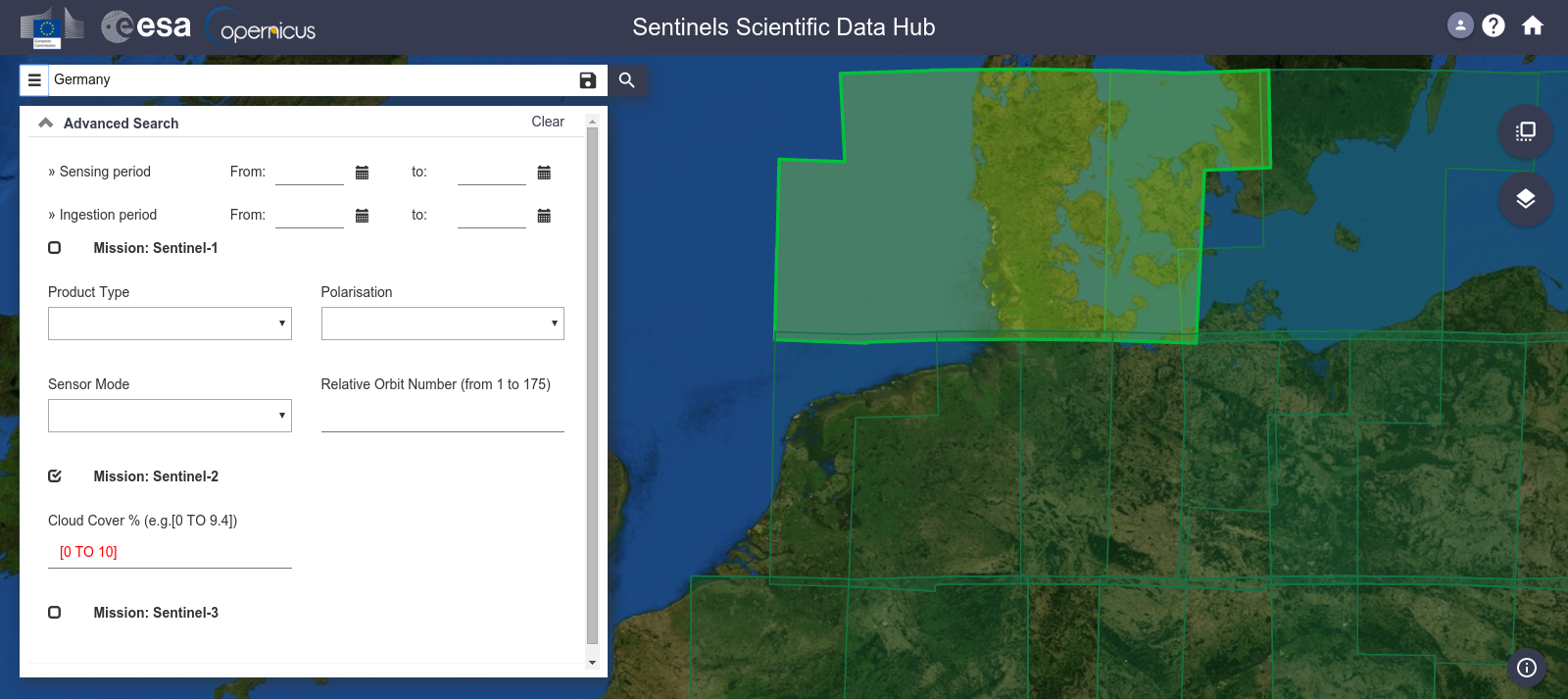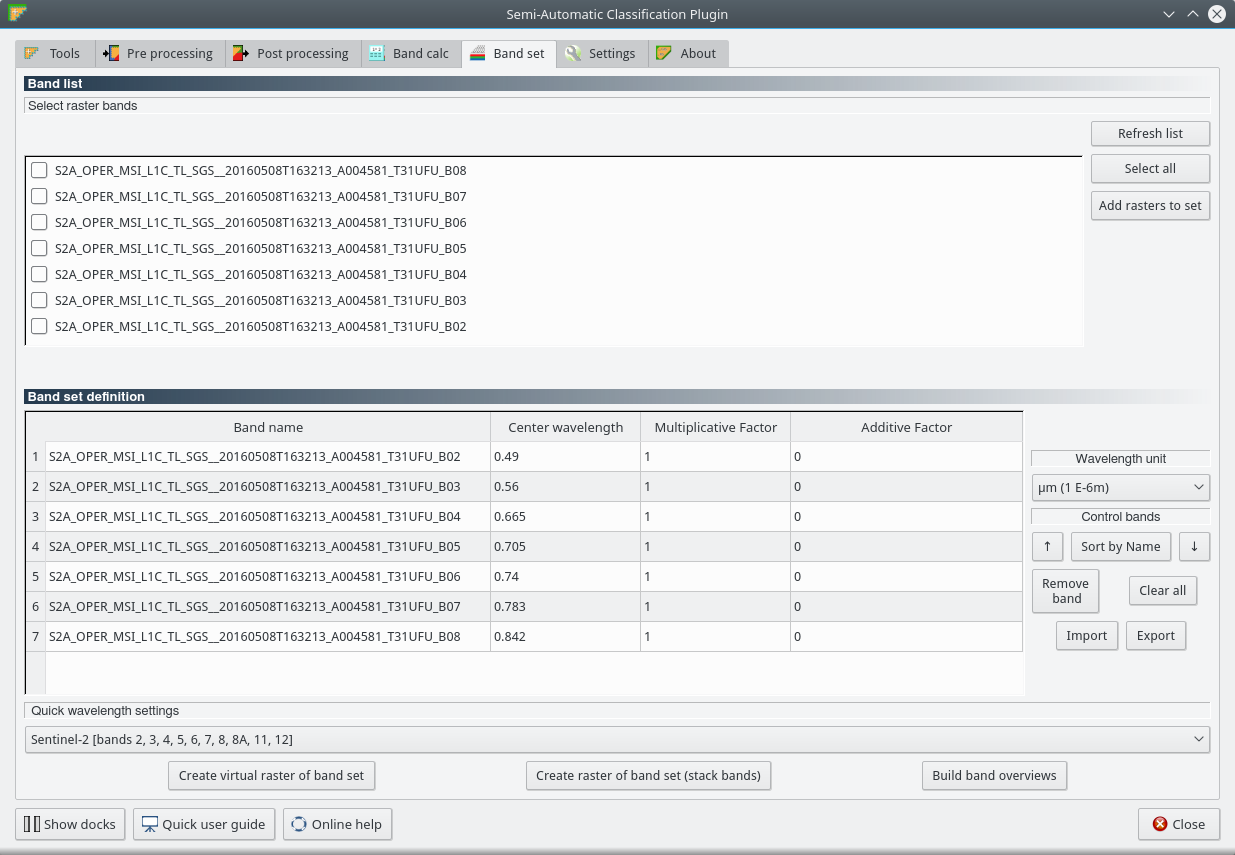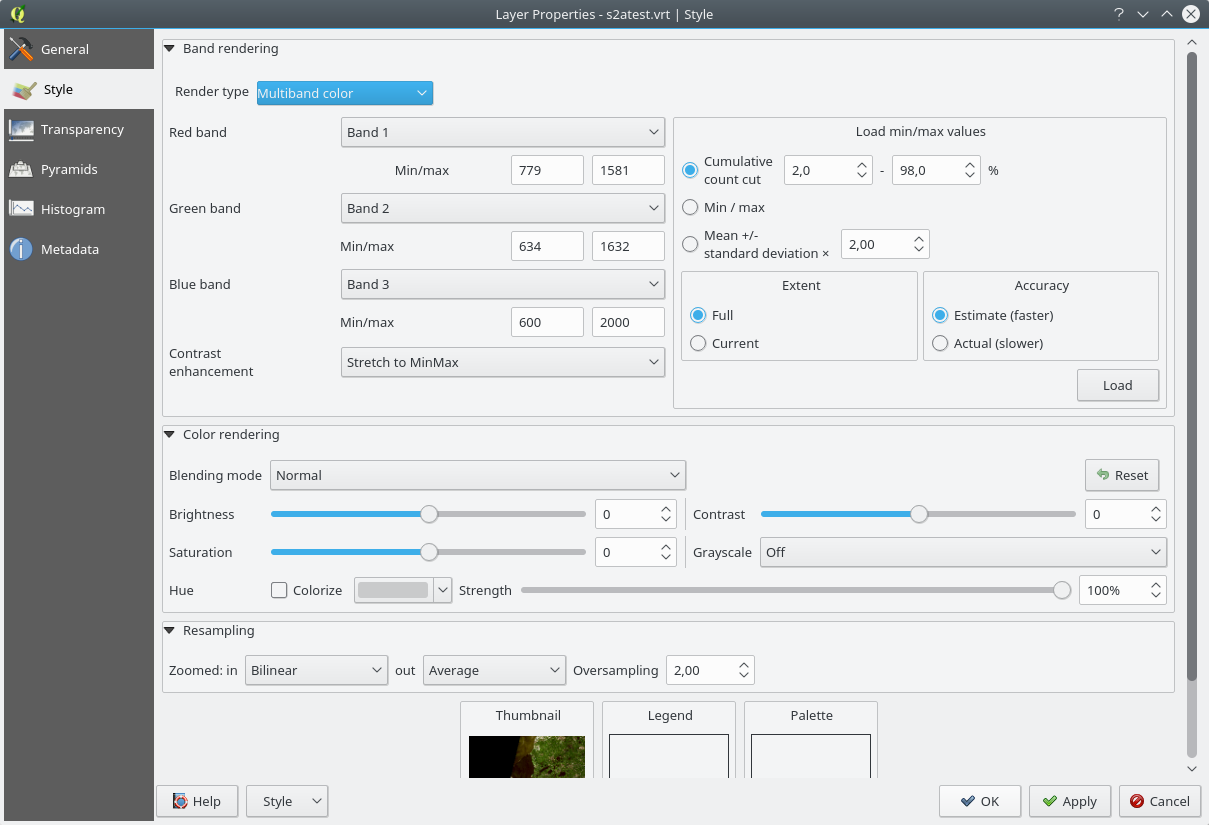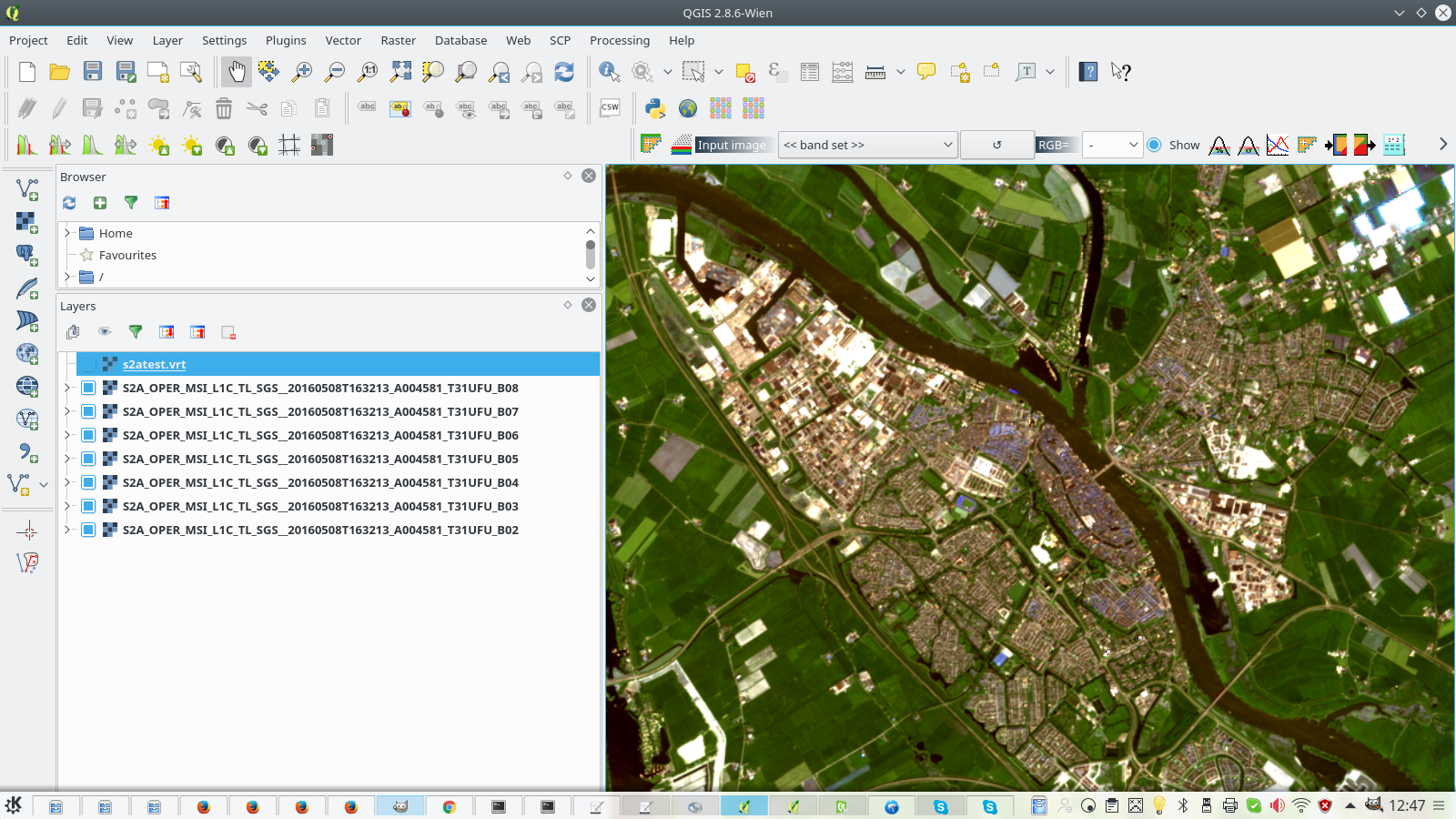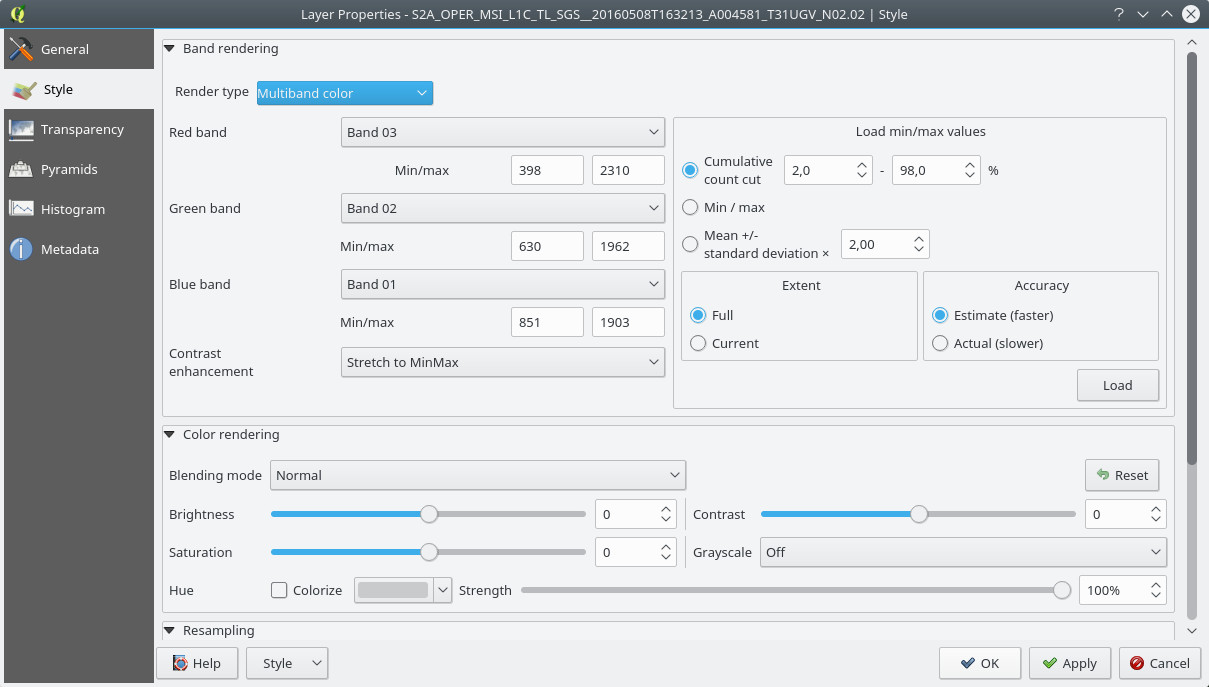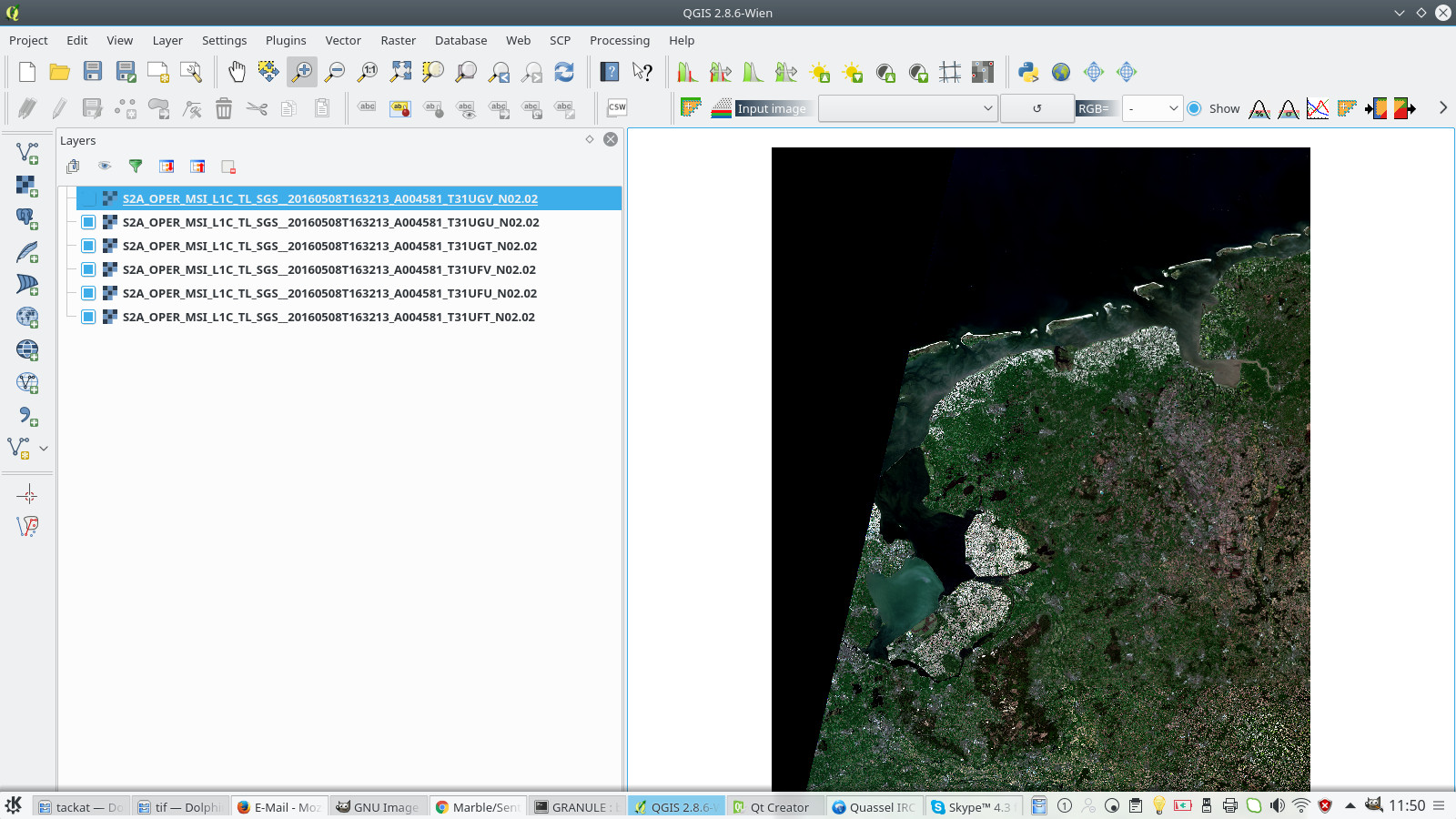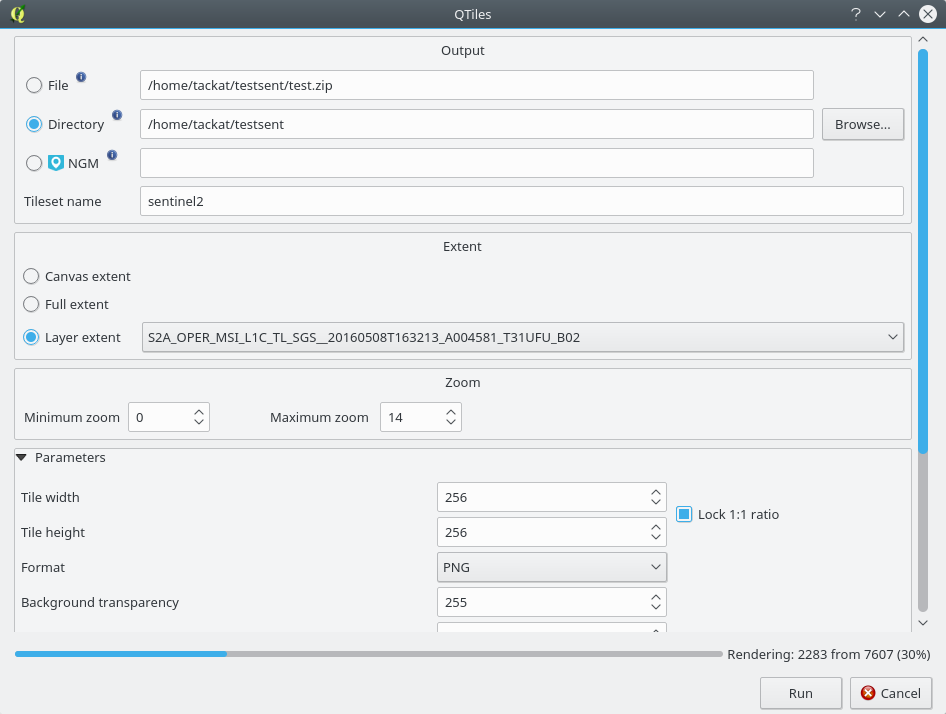Marble/Sentinel2MapTheme: Difference between revisions
*>Tackat phab |
*>Tackat phab |
||
| Line 162: | Line 162: | ||
* Press the '''Style button''' in the lower left corner | * Press the '''Style button''' in the lower left corner | ||
* Press '''Load Style''' and load the '''sentinel-marble-qml''' file. | * Press '''Load Style''' and load the '''sentinel-marble-qml''' file. | ||
[[File:style.jpg]] | |||
* Press '''Apply'''. As a result the color of the tile should change to something more vivid. | * Press '''Apply'''. As a result the color of the tile should change to something more vivid. | ||
* Right-click on the first (file) entry in the Layers panel again and choose '''Styles->Copy Style''' | * Right-click on the first (file) entry in the Layers panel again and choose '''Styles->Copy Style''' | ||
* Then right click on all other (file) entries in the Layers panel and choose '''Styles->Paste Style''' for each entry. | * Then right click on all other (file) entries in the Layers panel and choose '''Styles->Paste Style''' for each entry. | ||
As a temporary result you should see something like this: | |||
[[File:sentinel6tiles.jpg]] | |||
[[File:sentinel_closeup.jpg]] | |||
| Line 172: | Line 183: | ||
* Right-click on the first (file) entry in the Layers panel. | * Right-click on the first (file) entry in the Layers panel. | ||
* Choose '''Save As''' | * Choose '''Save As''' | ||
[[File:saveas.jpg]] | |||
* As an '''Output mode''' in the dialog choose '''Rendered Image'''. | * As an '''Output mode''' in the dialog choose '''Rendered Image'''. | ||
* Click '''Browse''' Button in the '''Save As field''', navigate to the tif directory inside the GRANULE directory. Press '''Ctrl+V''' to paste the layer name. | * Click '''Browse''' Button in the '''Save As field''', navigate to the tif directory inside the GRANULE directory. Press '''Ctrl+V''' to paste the layer name. | ||
Revision as of 10:00, 25 June 2016
Satellite Map Theme based on the Sentinel 2 Mission
Introduction/Motivation
This page is about the process that allows to create a satellite map theme for Marble based on the Sentinel data.
Sentinels Scientific Data Hub
Registering at the SciHub
Go to the Registration website of the SciHub and enter your name, username, password, e-Mail and country. As a domain you can choose "Land" and "Research" for the usage.
Once you press the Register button you will receive an e-Mail which allows you to finalize your registration in the SciHub system by pressing the included link.
As an alternative to creating your own login you can use "guest/guest" as a username/password when logging in.
Looking for data
Go to the SciHub website and press the Login Button to enter it. On the right side you can press the layers button to choose between the Hybrid, Road (OpenStreetMap) and Satellite map (Blue Marble/LandSat) for orientation.
Now we are ready to query some actual Sentinel data. In order to limit our query to useful entries we recommend these adjustments: Press the menu button on the left of the query line edit to enter the Advanced Search
- Check Mission: Sentinel-2
- Enter [0 TO 10] in the cloud coverage Section
Press the menu button again. The button will turn into a filter icon. Then enter a country name (e.g. Germany). As a result of the query you will get a list of entries.
You can browse through the pages. The thumb nails give you an idea about the quality of the photographic images. You can press the "eye" button to get an enlarged version of the thumbnail and to get more information.
- images that contain an area that hasn't been included in the map theme yet
- images that ideally have no cloud cover
- images that were taken in bright light.
- images that includes a maximum amount of complete tiles (with a minimum of tilted cut off black portions).
Once you've made a choice we suggest that you write down:
- the id of the entry (which you can retrieve by pressing the "eye" icon for the entry and copy the id from the title line.
- and the download url
in a text file. Good examples are:
id: S2A_OPER_PRD_MSIL1C_PDMC_20160508T220612_R008_V20160508T104027_20160508T104027 url: https://scihub.copernicus.eu/dhus/odata/v1/Products('4658007a-76a0-455c-bb9a-d9e789b5e1e3')/$value
id: S2A_OPER_PRD_MSIL1C_PDMC_20160508T221741_R008_V20160508T104027_20160508T104027 url: https://scihub.copernicus.eu/dhus/odata/v1/Products('0ded3149-d971-4524-ab80-536ffc1cbb55')/$value
Now click the download link to download the tile. The download will amount to 4-7GB on average. Even if the download gets aborted in the browser it should be possible to continue the download later on. Depending on the connection the download might take a few hours. At times the SciHub server has temporary maintenance down times.
Once the zip file is download unzip it in a directory of your choice. Make sure that your hard disc still has enough space left (approx. 10 GB).
Note: Once QGIS is installed you could also download further tiles using the SCP plugin, however this approach lacks the nice thumbnails for introspection:
Using QGIS to edit the Sentinel 2 data
QGIS installation
In order to process the data you need to install QGIS. On Ubuntu/Debian you can do this e.g. by opening a terminal and type:
sudo apt-get update
Type in a terminal:
sudo apt-get install qgis
Installing the required plugins
Launch QGIS and enter the Plugins menu. There choose Manage and Install Plugins. Select Not Installed and choose the following plugins for installation in the list:
- Semi-Automatic Classification Plugin
- QTiles
- OpenLayers Plugin
Once installed please right-click the toolbar area and enable the SCP Toolbar .
Opening the Sentinel data in QGIS using the SCP plugin
Launch QGIS and choose Layer -> Add Layer -> Add Raster Layer (or the associated toolbar checkboard button). Then navigate into the GRANULE directory. There choose the directory for the correct sub tile. The order of the tiles follows columns. Inside the sub tile directory use the Ctrl button to choose multiple files at once - namly those which end on b2-b8, b8a, b11, b12:
b2.jp2, b3.jp2, b4.jp2, b5.jp2, b6.jp2, b7.jp2, b8.jp2, b8a.jp2, b11.jp2, b12.jp2
Press Open to open them and wait for them to be loaded which might take about 10 secs.
For convenience you might want to press the Collapse All button in the Layers panel.
Now press the rainbow colored "Band set" button in the SCP toolbar. All files should appear in the upper section. Now apply the following steps:
- Press Select All
- Press Add rasters to set
- In the middle to the right press the Sort by Name button
- In the Quick wavelength settings press the drop down list combobox, scroll down and choose Sentinel-2 [bands 2, 3, 4, ...] (if it is Sentinel-2 right from the start you might need to change to a different entry and back to Sentinel-2 to apply the correct wave length band sets).
- Press Create virtual raster of band set
- Enter a band_set.vrt as a file name.
- Press Close
- Then in the SCP Toolbar choose RGB first to be 4-3-2 then change it to be 3-2-1 from the combobox (only after changing the correct color will be applied).
You should see a colorized version of your loaded tiles now. We suggest that you tweak the colors by right clicking on the vrt file entry on the right and press "Properties". In the Band rendering section we suggest that you make the following adjustments:
Red Band: Band 03 - 398 2310
Green Band: Band 02 - 630 1962
Blue Band: Band 01 - 851 1903
In the Resampling section choose
- Zoomed: in Bilinear out Average Oversampling 2,00
- Press Apply
As a result you should now see a nice relatively realistic looking rendering of the sentinel data.
You can zoom into it using the mouse scroll wheel down to street level (10m per pixel).
Note:
For further illustration we also recommend this video.
For more information please consult the Documentation
Questions:
1. are there other ways how we could achieve more realistic and better colors?
Using QGIS to create GeoTiffs for Sentinel-2 subtiles
Download the File:Sentinel.zip file and extract it in your home directory. It contains two files: createvrts.py and sentinel-marble.qml. Add the executable flag to the createvrts.py file.
Enter the GRANULE directory inside the .SAFE directory of the unzipped Sentinel-2 data. Then execute the createvrts.py createvrts.py script from inside that directory. It should create a vrts directory inside the GRANULE directory. Inside this directory you should find several .vrt files.
Now launch QGIS. Press Ctrl-Shift-R (or Layer->Add Layer->Add Raster Layer). We'd like to load several .vrt files at once. However loading all would most likely require too much memory. So we have to load them in batches: Using the Ctrl-Key select the first six .vrt files inside the newly created vrts directory. Then press Open.
Now we want to apply proper colorization and styling: The styling is stored inside the sentinel-marble.qml file (short for QGIS markup language - so it's NOT a Qt Quick file).
- Right-click on the first (file) entry in the Layers panel.
- Press Properties.
- Press the Style button in the lower left corner
- Press Load Style and load the sentinel-marble-qml file.
- Press Apply. As a result the color of the tile should change to something more vivid.
- Right-click on the first (file) entry in the Layers panel again and choose Styles->Copy Style
- Then right click on all other (file) entries in the Layers panel and choose Styles->Paste Style for each entry.
As a temporary result you should see something like this:
Now we want to save the resulting virtual tiles into actual GeoTIFF files:
- Right-click on the first (file) entry in the Layers panel.
- Choose Rename. Then copy the file name using Ctrl-C and press Enter.
- Right-click on the first (file) entry in the Layers panel.
- Choose Save As
- As an Output mode in the dialog choose Rendered Image.
- Click Browse Button in the Save As field, navigate to the tif directory inside the GRANULE directory. Press Ctrl+V to paste the layer name.
- Press Ok and fetch a cup of coffee while the progressbar goes up to 100%.
- Repeat this procedure for all other entries.
The resulting GeoTIFF files will contain the rendered image in RGB representation without storing each band. This is lighter on memory and is better suited for tile processing. While the GeoTIFF files amount to about 450MB they can be zipped to about 75 MB. Therefore they are also better suited for long-term storage than the original jp2 files. So please keep those files on a USB disk in case you want to recreate tiles later on.
Once you are done with creating the first batch of GeoTiffs quit QGIS and restart it. Then repeat the steps in this chapter for the other vrt files until there is a GeoTIFF file for every vrt file.
Tile Creation
With the new sentinel layer loaded and proper band sets in place we can now start to create our own tiles:
Press Plugins -> QTiles -> QTiles then
- In the Output section choose Directory and browse to your directory of choice where the tiles should be stored
- Enter sentinel2 as a Tileset name
- In the Extent section choose Layer Extent
- In the Zoom section choose 14 as a maximum zoom level
- In the Parameters section enable Make lines appear less jagged and Render tiles outside of layers extents (within combined extent).
Questions:
1. Are there any other alternatives to using QTiles? Any better QGIS plugins than this?
2. How can we merge multiple datasets?
Creating as custom DGML file for the Sentinel 2 data set
Creation of the DGML file should mostly be compatible with
How to integrate OSM "slippy" maps into Marble
Deployment on the server
For deploying the tiles on the server follow

